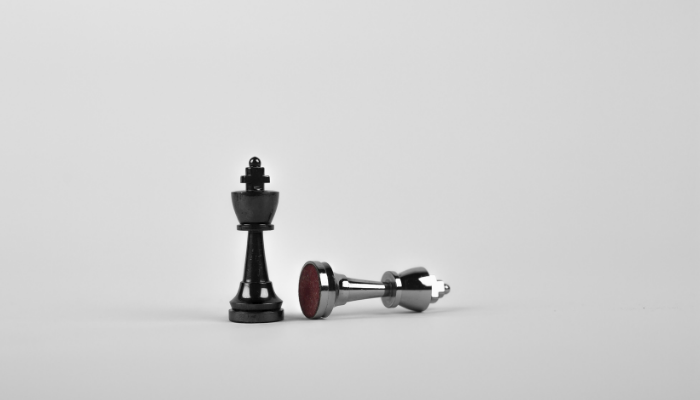Steadiness...Particularly uncommon in Western cultures is a profile that demonstrates a high level of Steadiness without any additional elements that could potentially counteract it.

Patience, serenity, and a welcoming demeanor are all traits associated with steadiness, and these traits shine through in a genuine High-S.
They value pleasant interactions with people and have a disposition that is generally friendly and outgoing. They aren’t naturally confident in social situations and need more outspoken people to step up and lead.
Table of Contents
- 1 How to Get Along with People
- 2 Ability Distribution
- 3 STRENGTHS OF PERSONALITY
- 4 Personality Flaws of Disc : High Steadiness
- 5 DIFFICULTIES AND STRONG POINTS IN ROMANTIC RELATIONSHIPS
- 6 AREA FOR PERSONAL EXPANSION
- 7 BOND WELL WITH PEOPLE WHO…
- 8 MAY EXPERIENCE OBSTACLES IN PROFESSIONAL CONNECTIONS WHEN…
- 9 GET MOTIVATED AT WORK IF…
- 10 EXPERIENCE EXHAUSTION AT THE OFFICE WHEN…
- 11 UNIVERSALLY THE BEST JOB ROLES
- 12 UNDER STRESS
- 13 BEST DRIVERS FOR MOTIVATION
How to Get Along with People
As with their way of life in general, individuals of this kind wait for others to make the first move in forming new friendships or romantic partnerships, as their steady, reliable demeanor is more suited to maintaining existing connections than initiating new ones.
This is why they tend to have a limited yet close-knit group of friends and acquaintances.
Ability Distribution
Their unique abilities can be summed up in one word: supportive. The combination of their dependability and loyalty with their emotional intelligence makes them excellent listeners and counselors.
They have the uncommon patience and self-control to keep at a task until it is completed. In this way, they are able to handle arduous jobs that other personality types might find too taxing to bear.
STRENGTHS OF PERSONALITY
”Good guys are strong when they’re alone. ”
Charles Bukowski

Individuals who score high in steadiness on the DISC assessment may possess a number of strengths that can be valuable in personal and professional situations. Some potential strengths of high steadiness individuals include:
- Dependability: These individuals tend to be dependable and reliable, and they can be counted on to follow through on tasks and commitments.
- Patience: High steadiness individuals tend to be patient and able to handle delays or setbacks without becoming frustrated or anxious.
- Empathy: These individuals tend to be empathetic and able to understand and connect with the feelings and perspectives of others.
- Team-oriented: High steadiness individuals are often team-oriented and able to work effectively with others towards a common goal.
- Detail-oriented: These individuals tend to be detail-oriented and thorough in their work, which can be valuable in tasks that require accuracy and precision.
- Stable and consistent: High steadiness individuals are often stable and consistent in their behavior and approach, which can be a strength in situations where stability and reliability are important.
It is essential to keep in mind that each person is one of a kind and that everyone possesses their own set of qualities that they excel at and areas in which they struggle. It is essential that we acknowledge and rejoice in both our accomplishments and our talents.
Personality Flaws of Disc : High Steadiness
“There is only one thing missing among perfect people: Reality.”
Rabindranath Tagore

Individuals who score high in steadiness on the DISC assessment may have some areas for personal expansion or growth. Some potential areas for development or “flaws” of high steadiness individuals include:
- Difficulty with change: These individuals may struggle with adapting to change and may resist new ideas or approaches.
- Lack of assertiveness: High steadiness individuals may have difficulty speaking up for themselves or expressing their needs and opinions, particularly in situations where they feel conflict is possible.
- Difficulty with decision-making: These individuals may have a harder time making decisions, especially in situations where they have to weigh multiple options.
- Struggle with risk-taking: High steadiness individuals may be hesitant to take risks or to try new things, which can limit their opportunities for growth and development.
- Difficulty with confrontation:
It is essential to keep in mind that expanding one’s self and growing as a person are both continuing processes, and it is always a good idea to focus on becoming the best version of oneself that we are capable of becoming. Seeking out opportunities for learning and development, as well as being receptive to feedback and engaging in self-reflection, can prove to be beneficial.
DIFFICULTIES AND STRONG POINTS IN ROMANTIC RELATIONSHIPS
“Love can make beautiful people do terrible things too.”
Jude Deveraux

Individuals who score high in steadiness on the DISC assessment may have some strengths and challenges in romantic relationships. Some potential difficulties and strong points of high steadiness individuals include:
- Dependability and reliability: These individuals tend to be dependable and reliable, which can be a strength in a romantic relationship as their partner can trust and count on them.
- Empathy: High steadiness individuals tend to be empathetic and able to understand and connect with the feelings and perspectives of their partner, which can help to foster strong emotional bonds.
- Team-oriented: These individuals are often team-oriented and able to work effectively with their partner towards a common goal, which can be a strength in a relationship.
- Difficulty with change: High steadiness individuals may struggle with adapting to change, which can be a challenge in a romantic relationship where change is inevitable.
- Lack of assertiveness: These individuals may have difficulty speaking up for themselves or expressing their needs and opinions, which can lead to misunderstandings or resentment in a relationship.
Difficulty with confrontation: High steadiness individuals may struggle with confrontation and may have a harder time addressing conflicts or issues directly, which can lead to unresolved issues in a relationship.
Keeping in mind that everyone is different and that every couple has their own dynamic is crucial. Learning to talk things out, making concessions, and resolving differences in constructive ways are all skills that can help in times of stress.
AREA FOR PERSONAL EXPANSION

Individuals who score high in steadiness on the DISC assessment may have some areas for personal expansion or growth. Some potential areas for development for high steadiness individuals include:
- Adapting to change: These individuals may benefit from working on adapting to change and being more open to new ideas and approaches.
- Assertiveness: High steadiness individuals may benefit from working on expressing their needs and opinions more effectively and assertively, particularly in situations where they feel conflict is possible.
- Decision-making: These individuals may benefit from developing their decision-making skills, especially in situations where they have to weigh multiple options.
- Risk-taking: High steadiness individuals may benefit from stepping outside of their comfort zone and taking more risks in order to grow and develop personally.
- Confrontation: These individuals may benefit from working on their ability to address conflicts or issues directly, as this can help to build stronger relationships and improve communication.
Always striving to improve oneself and become the best possible version of oneself is a wonderful concept, and it’s crucial to keep in mind that these are continuing processes of development. Seeking out growth possibilities and being receptive to criticism and introspection can be beneficial.
BOND WELL WITH PEOPLE WHO…
“If we want to be happy, we must believe that life is in the soul, not in the body.”
Tolstoy

Individuals who score high in steadiness on the DISC assessment may bond well with people who share similar values and approaches. Some specific traits or characteristics that high steadiness individuals may bond well with include:
- Dependability and reliability: These individuals tend to value dependability and reliability in others, and they may bond well with people who share these traits.
- Empathy: High steadiness individuals tend to value empathy and understanding in others, and they may bond well with people who are able to understand and connect with their feelings and perspectives.
- Team-oriented: These individuals are often team-oriented and may bond well with people who are able to work effectively towards a common goal.
- Steadiness and consistency: High steadiness individuals may bond well with people who are stable and consistent in their behavior and approach.
- Attention to detail: These individuals tend to be detail-oriented and may bond well with others who share this trait.
Keep in mind that everyone is different and that people form relationships in various ways. In order to find meaningful connections with others, it might be beneficial to be open and honest about our ideals and our approach to interpersonal interactions.
MAY EXPERIENCE OBSTACLES IN PROFESSIONAL CONNECTIONS WHEN…
Individuals who score high in steadiness on the DISC assessment may experience obstacles in professional connections in certain situations. Some potential challenges that high steadiness individuals may face include:
- Resistance to change: These individuals may struggle with adapting to change and may resist new ideas or approaches, which can be a challenge in a professional setting where change is often necessary.
- Lack of assertiveness: High steadiness individuals may have difficulty speaking up for themselves or expressing their needs and opinions, which can lead to misunderstandings or resentment in professional connections.
- Difficulty with decision-making: These individuals may have a harder time making decisions, especially in situations where they have to weigh multiple options. This can be a challenge in a professional setting where quick decisions may be required.
- Struggle with risk-taking: High steadiness individuals may be hesitant to take risks or to try new things, which can limit their opportunities for growth and development in a professional setting.
- Difficulty with confrontation: These individuals may struggle with confrontation and may have a harder time addressing conflicts or issues directly, which can lead to unresolved issues in professional connections.
It is essential to remember that every person is unique and has their own talents and weaknesses. Professional relationships can benefit from working on open communication, compromise, and finding healthy methods to negotiate challenges and disagreements.
GET MOTIVATED AT WORK IF…
Individuals who score high in steadiness on the DISC assessment may be motivated by a variety of factors at work. Some potential drivers for motivation for these individuals include:
- Sense of purpose: High steadiness individuals may be motivated by a sense of purpose or meaning in their work, and may be more engaged when they feel that their work is making a positive impact.
- Supportive work environment: These individuals may be motivated by a supportive and collaborative work environment, where they feel valued and supported by their colleagues.
- Opportunities for growth and development: High steadiness individuals may be motivated by opportunities for learning and personal growth, and may be more engaged when they have the opportunity to take on new challenges and learn new skills.
- Clear expectations: These individuals may be motivated by clear expectations and guidelines, as they tend to be detail-oriented and thrive when they have a clear understanding of their roles and responsibilities.
- Consistency: High steadiness individuals may be motivated by a sense of stability and consistency in their work, and may be more engaged when they know what to expect from day to day.
It’s essential to keep in mind that every single person is one of a kind, and that different things drive different kinds of people in different ways. It can be beneficial for managers to gain an understanding of the objectives and motivations of the members of their team and to create opportunities for their employees to grow and develop.
EXPERIENCE EXHAUSTION AT THE OFFICE WHEN…
Individuals who score high in steadiness on the DISC assessment may experience exhaustion at the office in certain situations. Some potential causes of exhaustion for these individuals include:
- Lack of structure or clarity: High steadiness individuals may experience exhaustion when they don’t have clear expectations or guidelines, or when their work environment is chaotic or unpredictable.
- Too much change: These individuals may struggle with adapting to change and may experience exhaustion when they are faced with frequent or unexpected changes in their work environment.
- High levels of conflict: High steadiness individuals may have difficulty with confrontation and may experience exhaustion when they are faced with high levels of conflict or disagreement in their work environment.
- Lack of support: These individuals may experience exhaustion when they feel unsupported or isolated at work, as they tend to value teamwork and collaboration.
- Lack of meaning or purpose: High steadiness individuals may be motivated by a sense of purpose or meaning in their work, and may experience exhaustion when they feel that their work lacks meaning or significance.
Keep in mind that tiredness is a normal part of life, and that self-care and developing appropriate coping mechanisms for stress and recharging are crucial. Setting limits, recharging with downtime, and reaching out for help when necessary are all ways to achieve this.
UNIVERSALLY THE BEST JOB ROLES
It’s important to remember that every individual is unique and that different people thrive in different job roles. That being said, individuals who score high in steadiness on the DISC assessment may excel in certain types of job roles due to their strengths and preferences. Some potential job roles that may be well-suited for high steadiness individuals include:
- Customer service: These individuals tend to be patient and empathetic, which can be valuable in customer service roles where they can connect with and help customers.
- Project management: High steadiness individuals tend to be detail-oriented and reliable, which can make them well-suited for project management roles where they can ensure that projects are completed accurately and on time.
- Team-oriented roles: These individuals are often team-oriented and may thrive in roles where they can work with others towards a common goal, such as in HR or recruitment.
- Administrative roles: High steadiness individuals tend to be detail-oriented and may excel in administrative roles where accuracy and precision are important.
- Social work: These individuals tend to be empathetic and may be well-suited for social work roles where they can connect with and support others.
Again, it’s important to remember that every individual is unique and that different people are suited for different job roles. It can be helpful to consider our strengths, preferences, and goals when exploring potential career paths.
UNDER STRESS
Individuals who score high in steadiness on the DISC assessment may react to stress in different ways, depending on their individual personality and coping mechanisms. Some potential ways that high steadiness individuals may respond to stress include:
- Seeking support: These individuals may seek out support from friends, family, or colleagues when they are feeling stressed, as they tend to value teamwork and collaboration.
- Taking a structured approach: High steadiness individuals tend to be detail-oriented and may respond to stress by breaking tasks down into smaller, more manageable pieces and taking a structured approach to addressing them.
- Seeking stability and consistency: These individuals may seek out stability and consistency in their environment when they are feeling stressed, as they tend to value stability and predictability.
- Seeking relaxation and self-care: High steadiness individuals may respond to stress by taking time to relax and recharge, such as through activities like yoga or meditation.
- Seeking clarity and understanding: These individuals may respond to stress by seeking clarity and understanding, such as by asking questions or seeking out additional information.
It is critical to remember that each person is unique, and that different people cope with stress in different ways. It can be beneficial to recognize our own coping processes and seek out good stress management techniques.
BEST DRIVERS FOR MOTIVATION
The patient disposition that underlies this type of person is at the heart of the driving forces that motivate them. They have to get the sense that those around them are supporting them, and most importantly, they have to be given enough time to adjust to the new circumstances. They have a natural aversion to change and, whenever it is feasible, they will choose to keep things the same as they have always been; it can be quite challenging for them to adapt to unexpected shifts in their circumstances.
When they have started something, they will want to give it their full attention and see it through to the end. In these kinds of circumstances, interruptions and diversions of any kind can be an especially demotivating factor.
It’s essential to keep in mind that every single person is one of a kind, and that different things drive different kinds of people in different ways. It can be beneficial for managers to gain an understanding of the objectives and motivations of the members of their team and to create opportunities for their employees to grow and develop.
Individuals who score high in steadiness on the DISC assessment may be motivated by a variety of factors. Some potential drivers for motivation for these individuals include:
- Sense of purpose: High steadiness individuals may be motivated by a sense of purpose or meaning in their work, and may be more engaged when they feel that their work is making a positive impact.
- Supportive work environment: These individuals may be motivated by a supportive and collaborative work environment, where they feel valued and supported by their colleagues.
- Opportunities for growth and development: High steadiness individuals may be motivated by opportunities for learning and personal growth, and may be more engaged when they have the opportunity to take on new challenges and learn new skills.
- Clear expectations: These individuals may be motivated by clear expectations and guidelines, as they tend to be detail-oriented and thrive when they have a clear understanding of their roles and responsibilities.
- Consistency: High steadiness individuals may be motivated by a sense of stability and consistency in their work, and may be more engaged when they know what to expect from day to day.
https://psytify.com/personality-types/
quotes in our website: https://psytify.com/quotes/
More quote resources: https://en.wikiquote.org/wiki/Main_Page


